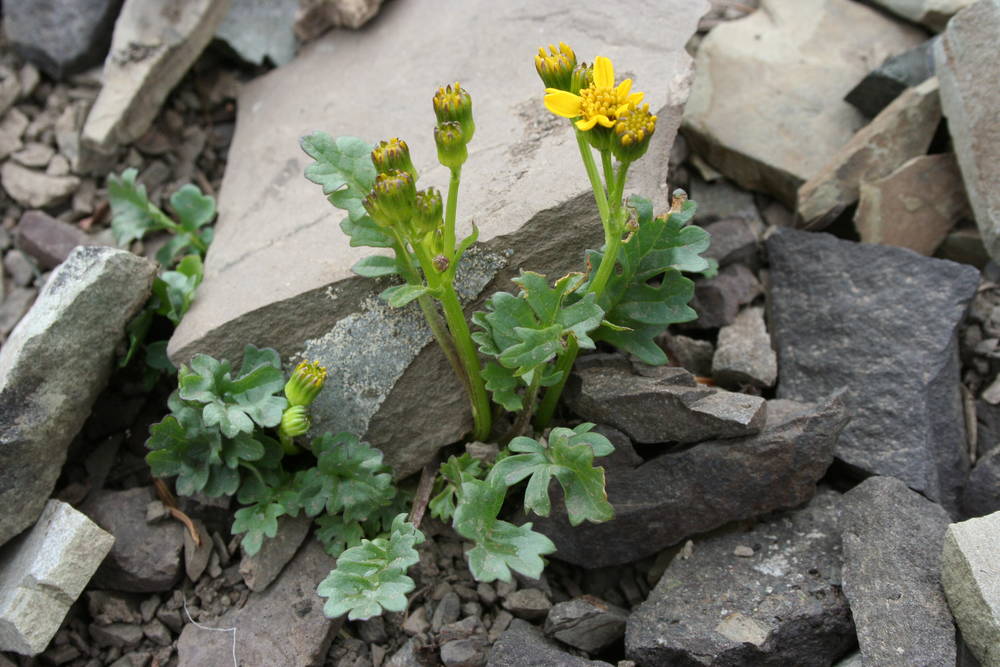Packera breweri
Packera flettii
Flett's groundsel
1 or 2–5, loosely clustered, glabrous or leaf axils sparsely pubescent.
blades obovate to ovate or sub-lyrate, bases tapering;
margins deeply dissected or pinnatifid, crenate to crenate-dentate, petiolate.
lower similar to basal; middle and upper absent or abruptly reduced distally, sessile.
campanulate to broadly cylindric.
5 or 8;
rays 5–10 mm.
20–30+;
corolla tubes 2.5–3.5 mm;
limbs 2.5–3.5 mm.
(8)13, 4–7 mm, light green;
tips yellowish;
surfaces glabrous.
0 or inconspicuous.
1–1.5 mm, glabrous;
pappi 4–4.5 mm.
4–10+; in subumbellate; cyme-like arrays, radiate;
peduncles glabrous;
bracts absent or inconspicuous.
=40.
Packera breweri
Packera flettii
Exposed slopes, rocky or gravelly soils. Flowering Jun–Jul. 300–1100 m. CR. WA. Native.
In Oregon, P. flettii is known only from the Coast Range and is rarely collected there. It is also rare in Washington but has a much wider distribution. This species has a unique chromosome number for the genus (2n=40) and is not known to hybridize with other species.
Debra Trock



